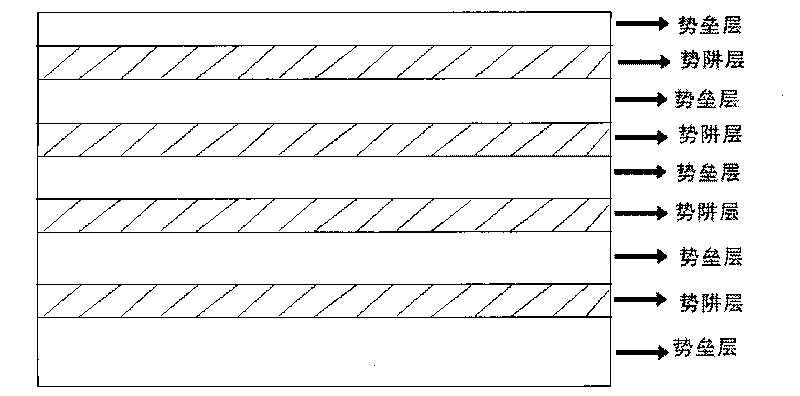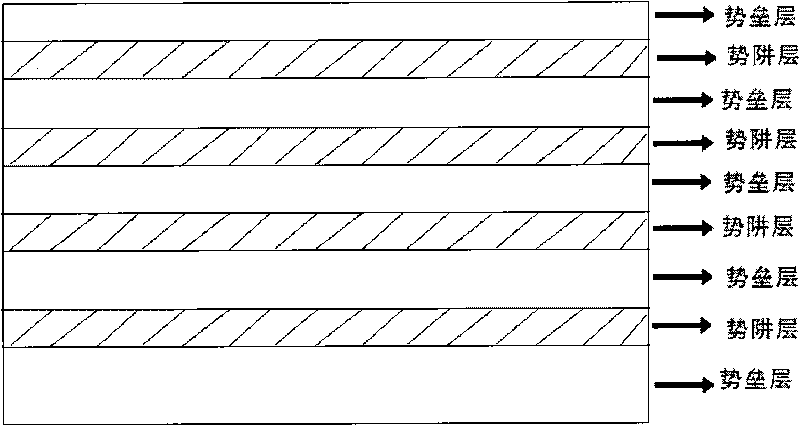Multiple quantum well structure for photoelectric device
A multi-quantum well structure, optoelectronic device technology, applied in electrical components, semiconductor devices, circuits, etc., can solve problems such as difficulty in making breakthroughs in brightness, low probability of electron and hole capture, and reduced probability of radiation recombination. Internal quantum efficiency, improve antistatic performance, improve reverse voltage effect
- Summary
- Abstract
- Description
- Claims
- Application Information
AI Technical Summary
Problems solved by technology
Method used
Image
Examples
Embodiment Construction
[0009] like figure 1 , figure 2 As shown, the present invention provides a multi-quantum well structure for optoelectronic devices, including n sequentially overlapping quantum well structures. The thickness of the barrier layer is greater than the thickness of the barrier layer close to the P-type semiconductor layer; the n is an integer greater than 2 and less than 20.
[0010] The thicknesses from the mth potential well layer to the nth potential barrier layer near the N-type semiconductor layer can be gradually reduced, and the m is an integer greater than 0 and less than n.
[0011] The potential well layers of the first m quantum wells close to the N-type semiconductor layer may have the same thickness, and the thicknesses of the m+1th to nth potential barrier layers become thinner successively, and the m is an integer greater than 0 and less than n.
[0012] The thickness of the potential well layers of the first m quantum wells close to the N-type semiconductor laye...
PUM
 Login to View More
Login to View More Abstract
Description
Claims
Application Information
 Login to View More
Login to View More - Generate Ideas
- Intellectual Property
- Life Sciences
- Materials
- Tech Scout
- Unparalleled Data Quality
- Higher Quality Content
- 60% Fewer Hallucinations
Browse by: Latest US Patents, China's latest patents, Technical Efficacy Thesaurus, Application Domain, Technology Topic, Popular Technical Reports.
© 2025 PatSnap. All rights reserved.Legal|Privacy policy|Modern Slavery Act Transparency Statement|Sitemap|About US| Contact US: help@patsnap.com



